The biosphere reserve
Covering 2500 km2 during the dry season, but reaching 12 000 km2 at the height of the floods, the Tonle Sap is the largest freshwater lake in Southeast Asia. A unique hydrological phenomenon, resulting from the link with the Mekong, causes seasonal flooding of a vast floodplain around the lake and its particular vegetation, usually called “flooded forest”.
UNESCO listed the Tonle Sap on the list of Biosphere Reserves in 1997 because of its outstanding ecological, economic, social and cultural value.
The Tonle Sap is one of the world’s largest freshwater fisheries (annual catches of 300 000 tonnes). It is also home to the largest colony of water birds in the region and is home to the world’s largest snake harvest (five million a year!), Mainly to serve as snacks for farmed crocodiles. Three million Cambodians depend directly on the lake’s resources, fish providing 70% of their protein intake.
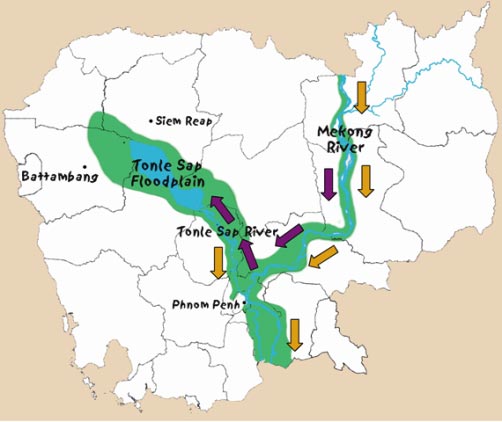
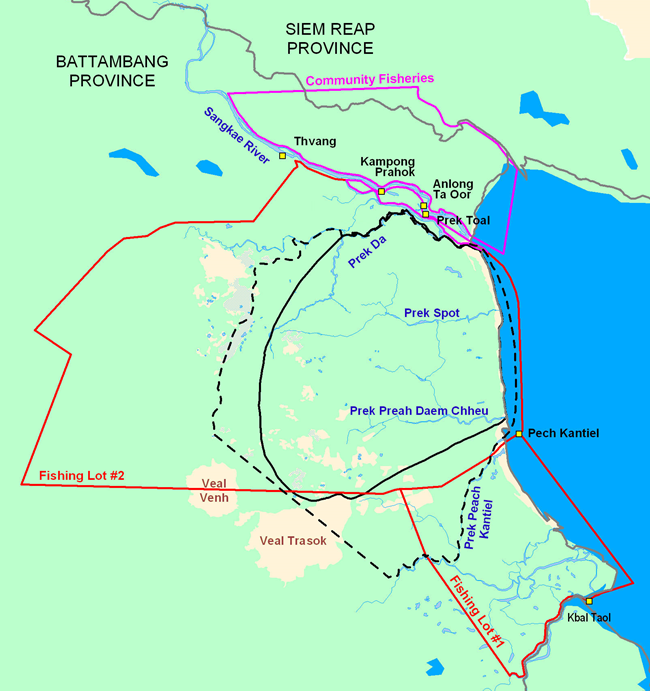
Prek Toal flooded forest has been designated a core area (21,000 ha) of the UNESCO Biosphere Reserve because of its botanical diversity and its threatened water bird colonies.
In addition, in 2015, Prek Toal was included in the list of Ramsar sites, protecting wetlands of international importance.
Illegal and destructive fishing techniques (pumping, electric fishing, etc.), poaching, reduction of flooded forest areas (clearing for agriculture, fire, cutting of firewood), invasive exotic plants (giant mimosa, water hyacinth) all converge to impoverish the ecological balance and biodiversity of the lake.
Beyond these local threats, the hydroelectric dams under construction on the Mekong significantly disrupt the hydrological cycle of the lake, while many projects on the Lower Mekong block fish migration and nutrient circulation. This could lead to massive depletion of the biological productivity of the lake and lead to a major food crisis in Cambodia.
More recently, the massive use of disposable plastics causes worrying pollution, with health and ecological impacts still poorly measured.
Through its interventions and approach, Osmose tackles these threats at the local level by initiating changes in natural resource exploitation patterns and supporting alternative livelihoods to fisheries. Osmose’s actions are aimed at reducing the dependence of local populations on the decline of natural resources while instilling an awareness of the ecological issues and threats weighing on the Tonle Sap Lake.
The bird sanctuary
The Prek Toal flooded forest is the last breeding site for a series of large waterbirds throughout Southeast Asia. It is an internationally important refuge for the Spot-billed Pelican, Milky Stork and Painted Stork, Greater and Lesser Adjutant and Black-headed Ibis, all of which are globally threatened species. These species nest in dense colonies throughout the reserve between October and June. In addition, the sanctuary is also home to the Grey-headed Fish-eagle and the very rare and enigmatic Masked finfoot.
The colonies, discovered in 1994, were then seriously threatened by a massive collection of eggs and chicks. In 1996, an estimated 26,000 eggs and 3,000 chicks were collected. They were resold in the floating villages as a delicacy and a change of the daily fish. Since 2001, a team of forest rangers, consisting of villagers including former poachers, has been set up by the Wildlife Conservation Society (WCS) with the support of Osmose. This conservation team ensures the protection of colonies throughout the reproductive cycle and since then the numbers have increased dramatically.
The following data is from the 2013-2014 WCS report. A new report with up-to-date data is expected for 2019-2020.
We selected 9 iconic birds from the Prek Toal Reserve.
All are threatened species.
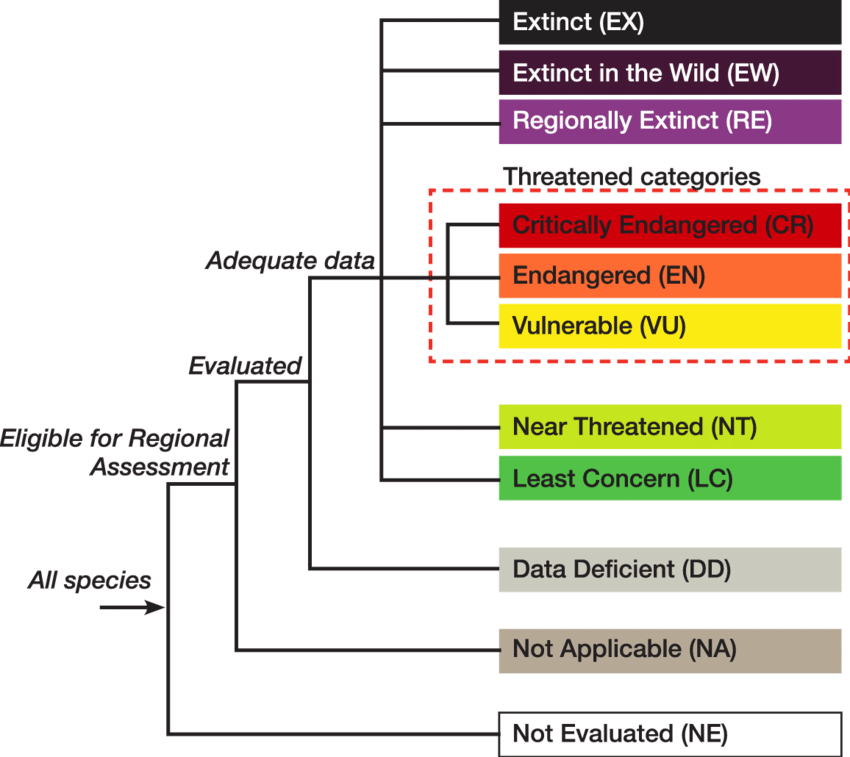
Greater Adjutant
The Greater Adjutant is the largest and rarest stork species in the world. It measures between 145 and 150 cm high with a wingspan of about 2.5 meters. Its diet is varied: frogs, reptiles, fish, crustaceans, large insects, young mammals and birds. It is also a scavenger. The world population is estimated at 800 to 1,000 adult individuals, and it remains only in Assam (India) and Cambodia. With 150 to 200 pairs in Prek Toal is the largest breeding colony in the world.
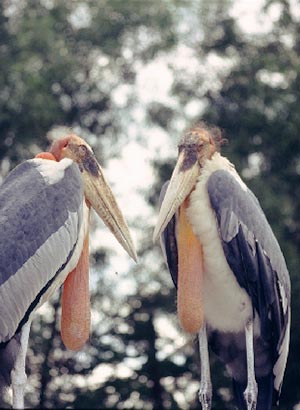

150cm

2,5m

frogs, reptiles, fish, crustaceans, large insects, as well as young mammals and birds

1,000 mature individuals

150-200 pairs live in Prek Toal

Endangered of extinction
Lesser Adjutant
The Lesser Adjutant is a large stork at 120 -130 cm in height with a wingspan of over two meters. It has a similar diet to the closely related Greater Adjutant. The global population is estimated at around 5,500-10,000 mature individuals and declining. For this reason it is classified as Globally Vulnerable.
Population trend in Prek Toal:
Over the last ten years the Lesser Adjutant population at Prek Toal has grown slowly. However, 2014 was a remarkable year as a total of 395 nests were recorded.
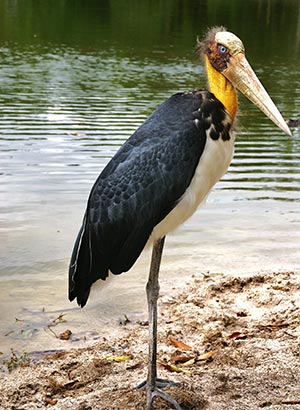

120 à 130cm

>2m

frogs, reptiles, fish, crustaceans, large insects, as well as young mammals and birds

5,500-10,000 mature individuals

400 pairs at Prek Toal

Vulnerable
Painted Stork
The Painted Stork is 95 -100 cm height. Its diet is varied, feeding on frogs, reptiles, fish, crustaceans and large insects. It occupies mainland Southeast Asia and the Indian Subcontinent. The global population is estimated at around 10,000-17,000 and declining, and it is therefore classified as Globally Near Threatened. In 2014, the number of visible nest trees were decreasing, at 368 compared to 479 in 2012.
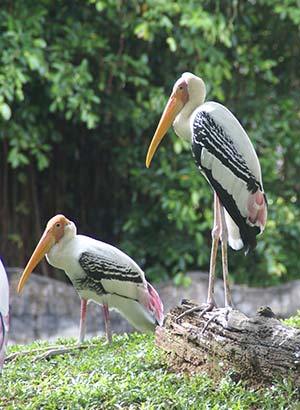

95 – 100cm

>2m

frogs, reptiles, fish, crustaceans and large insects

16,000 to 24,000 adults in the world

2,000 – 2,500 pairs at Prek Toal

Near Threatened
Milky stork
The Milky Stork is very closely related to the Painted Stork. It is 92-97 cm high. Their diet is varied, feeding on crustaceans, amphibians, fish, reptiles and large insects. Most of the global population of Milky Stork is found on the coast of Sumatra and Java (Indonesia). Prek Toal is the only location in mainland Southeast Asia where the species breed. The global population of the Milky Stork is estimated at around 1,500 mature individuals. Due to accelerating declines the species was recently up listed to Globally Endangered.
Population trend in Prek Toal:
The Milky Stork shows no clear long-term population trends. However it is noteworthy that since 2012 the population, and number of trees on which it has been found nesting, is approximately half that recorded in 2010 and 2011. However, there was a slight improvement in the number of nests recorded in 2014.
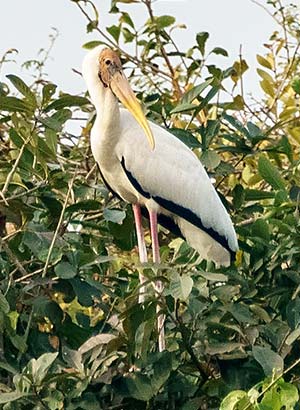

92 à 97cm

>2m

crustaceans, amphibians, fish, reptiles and insects

1500 adults in the world

10 – 15 pairs at Prek Toal

Endangered
Asian Openbill
The Asian Openbill is a relatively small stork at just 70-80 cm high. The bill of this bird is specially adapted to efficiently open a snail’s shell. The global population is thought to be large, and it is thought to be stable or even increasing globalIy. It is therefore listed as Globally Least Concern.
Population trend in Prek Toal:
Numbers of recorded Asian Openbill nests increased from 688 in 2004 to 14,000 in 2010 and have since stabilized around this figure. Along with Oriental Darter, Asian Openbill has shown the most dramatic increase in number of breeding pairs since monitoring began.
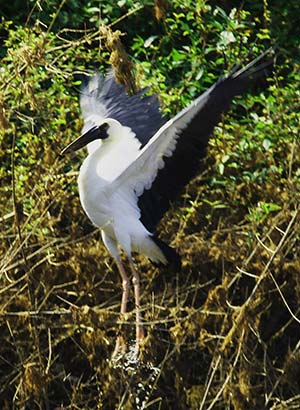

70 – 80cm

Snail

14,000 pairs at Prek Toal

Least Concern
Spot-billed Pelican
Spot-billed Pelican is a large waterbird, 127-140 cm in length. Due to their unique bills and feeding method, the diet of pelicans is restricted almost exclusively to fish. It is found in the Indian Subcontinent and Southeast Asia. In the latter, it breeds only at Prek Toal. The global population estimated as around 8,700-12,000 mature individuals and declining, it is therefore classified as Globally Near Threatened.
Population trend in Prek Toal:
Spot-billed Pelicans typically breed when the water level is relatively high. They are sensitive to disturbance and usually arrive in the core area at least one month in advance of breeding. The number of Spot-billed Pelican nests recorded in 2014 was 1,803, it’s the highest on record.
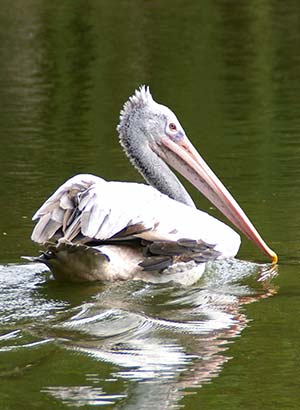

127 – 140cm

Fish

8700 to 12000 adults in the world

1,600-1,800 nests at Prek Toal

Near Threatened
Oriental Darter
The Oriental Darter is relatively large, reaching 85 -97 cm. Their diet is almost exclusively fish, which are caught by diving through the surface of the water. Oriental Darters are found throughout the Indian Subcontinent and Southeast Asia. The global population is estimated at 22,000 mature individuals. It is declining over most of its range and is therefore classified as Globally Near Threatened.
Population trend in Prek Toal:
Of all the waterbirds breeding at Prek Toal, Oriental Darters breed the earliest, and although this means that the threat from human disturbance is in theory highest, the colonies are tightly aggregated and can be efficiently protected and counted by the rangers.
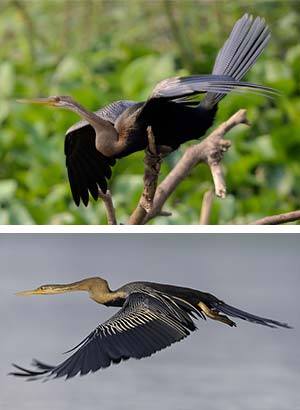

85 – 97cm

fish

22000 adults in the world

7,000 pairs at Prek Toal

Near Threatened
Black-head Ibis
In Prek Toal the Globally Near Threatened Black-headed Ibis tends to breed low down, deep in the scrub. Their nests are rarely visible from the platforms.
In 2014, we counted 13 nesting trees, 99 nests, 313 chicks. For the reasons stated above, this is not an accurate measure of the population.
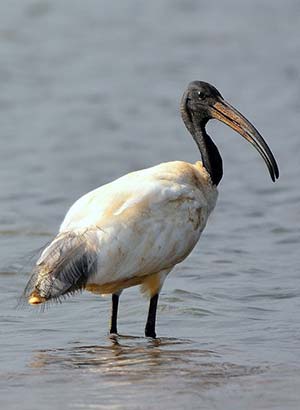

75cm

Crustaceans, amphibians, fish, reptiles and insect

10,000 – 20,000 adults in the world

100 – 200 pairs at Prek Toal

Near Threatened
Grey-headed Fish Eagle
The Grey-headed Fish Eagle is a Globally Near Threatened species that is scarce throughout Southeast Asia and the Indian Subcontinent. It is closely tied to freshwater wetlands. There were 40 breeding pairs in 2014.


69 – 74cm

Fish, reptiles, small animals, and water snake

10,000 – 100,000 adults in the world

40 pairs at Prek Toal

Near Threatened

CONTACT US
![]()
House # 0203, Group 8, Phum Wat Damnak, Sangkat Salakamreuk, Siem Reap, Cambodia PO Box 93-118
+855 99 707 009/ +855 63 765 506
![]()
comms@osmosetonlesap.net
©OSMOSE - 2019
Made with passion by Cruise Sec Production